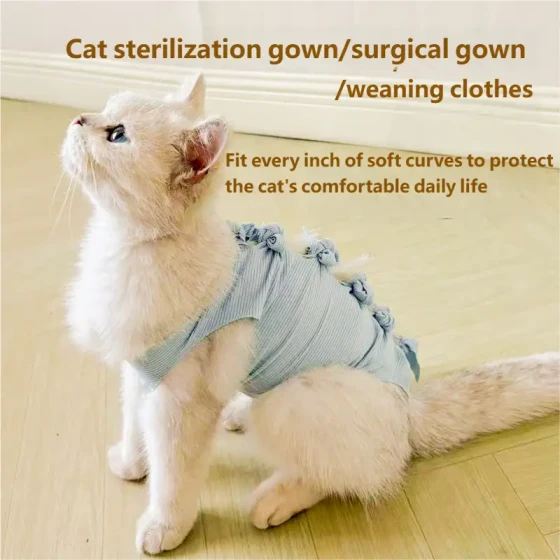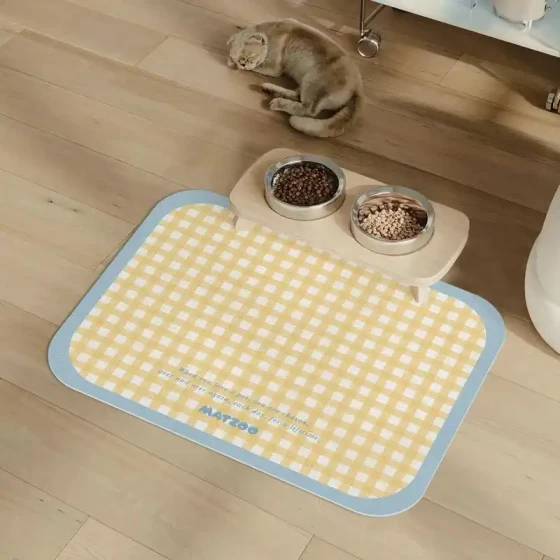Is it okay to be scratched through pants by a cat_Do scratches through clothing from cats cause infection
Whether being scratched through pants by a cat poses a problem and requires action depends on the depth of the scratch, whether the skin is broken, and the health status of the cat. Even through clothing, the sharp claws of a cat can penetrate fabric and injure the skin, posing risks of infection including bacterial infection, cat scratch disease, and in rare cases, rabies. Therefore, understanding how to properly handle such scratches is very important.
How much risk is there from being scratched through pants by a cat?

Many people may think that being scratched through pants by a cat is not a big deal since there is a layer of fabric in between. But the fact is, cat claws are very sharp, and even jeans or thicker clothing might be scratched through, causing skin injuries. It is like a thin “barrier” that can resist some “attacks,” but if the claws are sharp enough and the force is strong enough, this “barrier” can be breached. Once the skin is broken, even a shallow scratch may allow bacteria and viruses to enter.
Cat claws and mouths may carry various bacteria. The most common risks include:
- Common bacterial infection: Redness, swelling, pain, or even pus at the scratch site. This is similar to what might happen if a minor scratch or scrape is not properly treated.
- Cat scratch disease: This is a condition caused by Bartonella henselae bacteria. Infection usually occurs through scratches, bites, or cats licking wounds. Even healthy cats, especially kittens, may carry this bacteria. Typical symptoms include a rash or small lumps at the scratch site, swollen and painful lymph nodes near the scratch, possibly accompanied by fever and fatigue. Most cases resolve on their own, but occasionally more serious complications may occur.
- Rabies: Although cases of rabies transmission by cats are relatively rare, it is theoretically possible, especially in areas where rabies is prevalent. Rabies virus is mainly transmitted through saliva from infected animals, typically via bites. However, if a cat’s claw is contaminated with saliva and the scratch breaks the skin, infection risk exists, though this is very rare. Rabies infection is almost always fatal once symptoms appear.
So, will scratches through pants actually break the skin? It depends on the sharpness of the cat’s nails, the force of scratching, and the material and thickness of the pants. Thin pants, like tights or thin cotton trousers, are easily penetrated. Even jeans can be pierced if the cat scratches forcefully and at certain angles. If after removing your pants you see visible scratches, redness, or bleeding spots on the skin, it means the skin is broken and infection risk is present.
What to do immediately after being scratched?
If you notice the skin is broken after being scratched through pants by a cat, immediate wound care is crucial. This can greatly reduce infection risk. The treatment is like giving the wound a “bath” to wash away bacteria and viruses.
- Rinse the wound immediately: Time is critical! Rinse the wound under running, clean water (such as tap water) for at least 15 minutes. You can use soapy water or other mild alkaline cleansers during rinsing. The purpose is to wash away dirt, bacteria, and viruses from the wound. While rinsing, gently press around the wound to help remove debris and blood, but never suck the wound with your mouth.
- Disinfect: After rinsing, disinfect the wound with medical alcohol or povidone-iodine. This helps kill residual bacteria and viruses at the site.
- Bandage (if necessary): For shallow scratches, keep the wound clean and dry; usually bandaging is not needed. But if the wound is deep or bleeding, cover it with clean gauze or a band-aid to prevent further contamination. Make sure not to seal the wound tightly so it can drain.
When to see a doctor?
Although many minor cat scratches heal on their own with proper care, some situations require attention and prompt medical consultation.
- Deep or heavily bleeding wound: If the wound is deep, bleeding significantly, or has irregular edges after being scratched through pants, a doctor may need to perform wound cleaning and suturing.
- Signs of infection: Redness, worsening pain, increased discharge, fever, or other symptoms at the scratch site may indicate infection. In this case, seek medical attention promptly. A doctor may prescribe antibiotics.
- Symptoms of cat scratch disease: If swollen lymph nodes near the scratch, fever, fatigue, or other symptoms appear days or weeks after the scratch, see a doctor and inform them about the cat scratch to help diagnose cat scratch disease.
- Uncertain cat health status: If the cat was stray or you don’t know its vaccination and health history, consult a doctor about the need for rabies vaccination as a precaution. Even for pet cats never vaccinated, there is theoretical risk.
What you need to know about rabies vaccine
Rabies is an extremely serious disease. Although the risk of transmission through scratches is low, consequences are severe. Therefore, when risks are uncertain, it is safest to consult a medical professional and follow their advice about rabies vaccination.
According to the World Health Organization (WHO), post-exposure treatment varies based on the level of exposure. Scratches through clothing without skin breakage are generally considered low-risk and do not require vaccination. But if scratches break the skin (even minor abrasions or bleeding), this is a higher risk exposure requiring wound care and medical consultation about vaccination.
The principle for rabies vaccination is “the sooner the better; late vaccination is better than none.” Even if you only remember to vaccinate after exposure, completing the full vaccine course before symptoms develop is protective. In China, rabies vaccine regimens typically include either a “five-dose” or “four-dose” schedule, with timing and doses tailored by doctors based on your situation.
Prevention is better than cure: How to reduce the risk of being scratched by cats?
As a pet owner or animal lover, some techniques can effectively reduce the chance of being scratched:
- Gentle interaction: When playing with cats, avoid behaviors that may cause them stress or provoke aggression. Do not forcibly hold cats, especially when they do not want to be held.
- Use toys: When playing with cats, use wand toys and similar items instead of hands or feet to avoid accidental scratches.
- Regular nail trimming: Regularly trim your cat’s nails to reduce the severity of scratches.
- Educate children: Teach children at home how to properly interact with cats and avoid pulling their tails, ears, or engaging in other harmful behaviors.
- Watch the cat’s mood: Observe cat behavior and avoid disturbing cats when they are anxious, scared, or irritated.
Frequently Asked Questions
Q: I was scratched through pants by a cat, no tears in the pants or skin. Do I need a rabies vaccine?
A: If the skin is not broken, vaccination is usually not necessary. Rabies virus mainly transmits through broken skin or mucous membranes.
Q: If scratched through clothing by a cat and the skin is broken, will I definitely get cat scratch disease?
A: Not necessarily. Cat scratch disease is caused by Bartonella henselae bacteria. Not all cats carry this bacteria, and not all people scratched by infected cats become ill. However, skin breakage increases infection risk and requires proper wound care and monitoring for symptoms.
Q: How long does it take for a cat scratch to heal?
A: Minor scratches usually heal within a few days to a week if treated properly. Deeper or infected wounds take longer and need medical care.
Q: Can cat scratch disease be transmitted from person to person?
A: Cat scratch disease mainly transmits through cat scratches, bites, or licking. It normally does not spread from person to person.
Summary
Being scratched through pants by a cat may seem minor, but if the skin is broken, there remain risks of bacterial infection, cat scratch disease, and even rabies. The key is correctly assessing the wound and promptly performing proper wound care: thorough rinsing and disinfection. If the wound is deep, infected, or you are uncertain about the cat’s health status, seek medical attention and follow doctors’ advice on rabies or tetanus vaccination. Remember, prevention is always better than cure. Knowing the risks and taking appropriate precautions will allow you to enjoy close time with your feline friend more safely.



